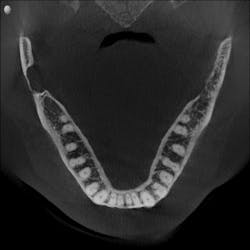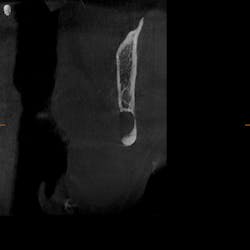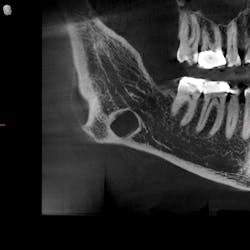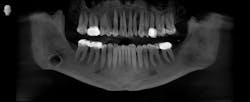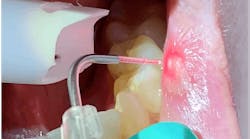Editor's note: Originally published in December 2019. Updated February 14, 2022.
Case history
Clinical assessment
As part of our intake process to make a sleep mandibular advancement device, we take a cone beam image (figures 1–4). This way we can evaluate sinuses, septum, turbinates, teeth, and jaws.
Upon examination, it was noted that a dark, radiolucent lesion was present on the lower right jaw, anterior to the angle of the mandible. The patient didn’t have any pain, symptoms, or knowledge of the lesion. It was not palpable. He reported that he had his third molars removed in his twenties with no complications.
Differential diagnosis and discussion
Reflecting back on my amazing pathology education at Creighton University (thanks, Dr. Bob Achterberg!), I immediately tried to think of what my differentials could be. Full disclosure: I was worried that my patient’s jaw could break at any moment. I thought it was a residual cyst from third-molar removal.The Stafne defect is code for a depression in the bone, a concavity, due to the submandibular gland. In addition, it can’t be qualified as a cyst because there is no epithelial lining or fluid content. It does usually occur more in men as well.1 There is no treatment necessary; it’s something we can just monitor.
Read another pathology case: An asymptomatic, fluctuant mass with a bluish hue
Reference
1. Hisatomi M, Munhoz L, Asaumi J, Arita ES. Stafne bone defects radiographic features in panoramic radiographs: assessment of 91 cases. Med Oral Patol Oral Cir Bucal. 2019;24(1):e12-e19. doi:10.4317/medoral.22592.

